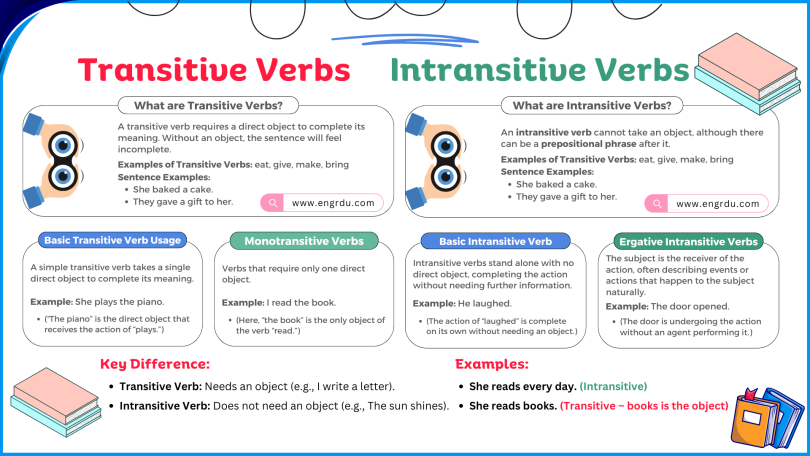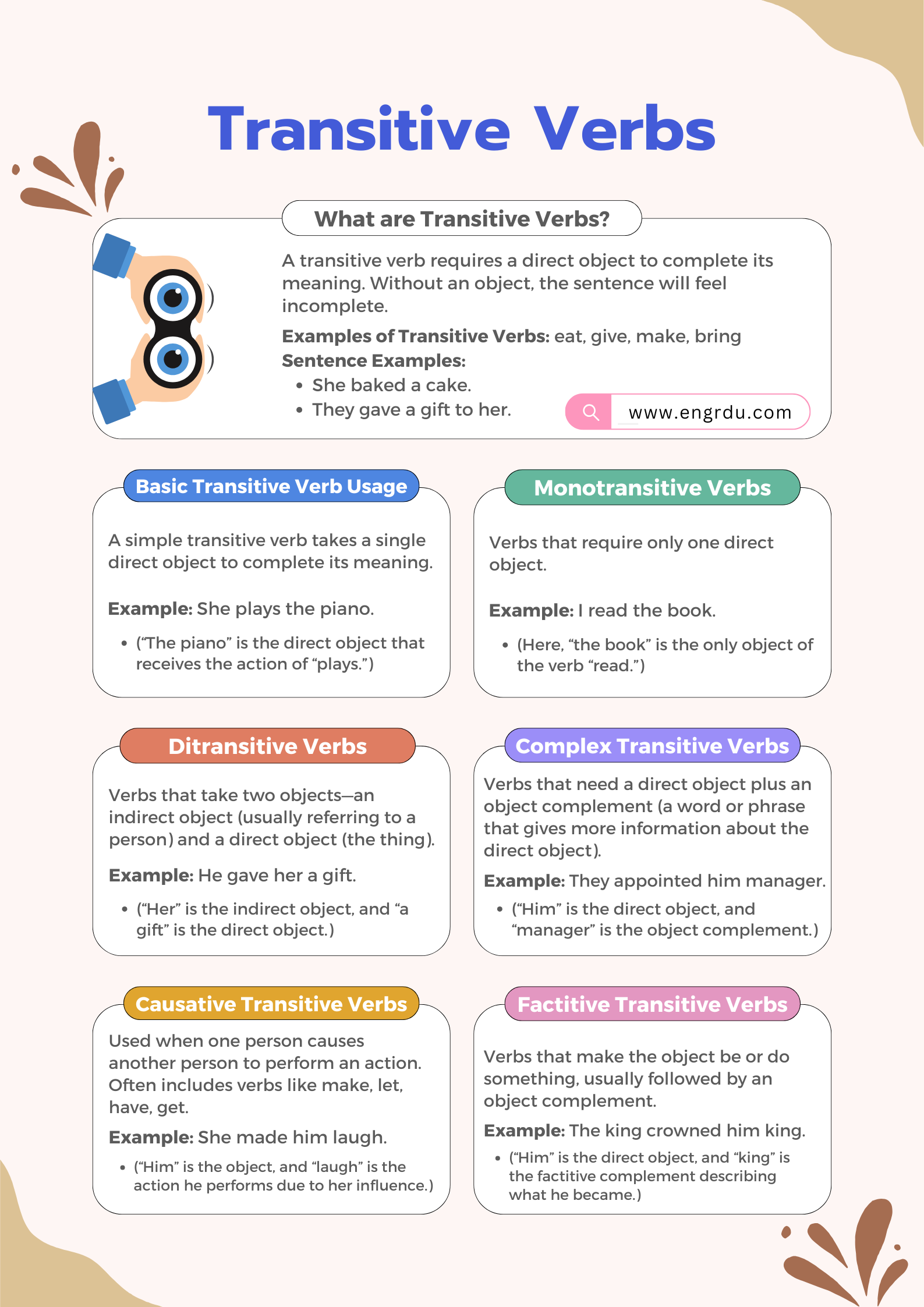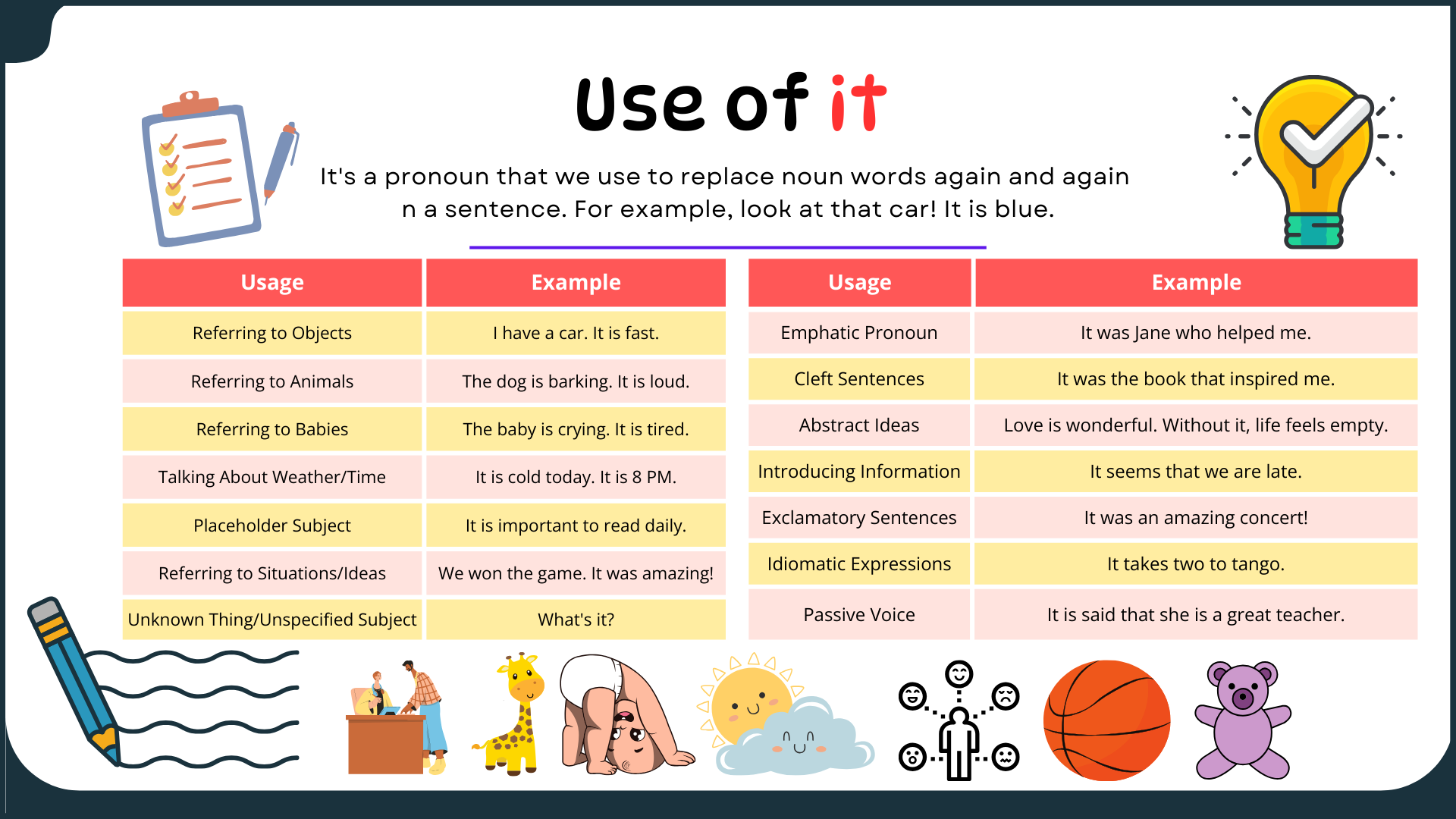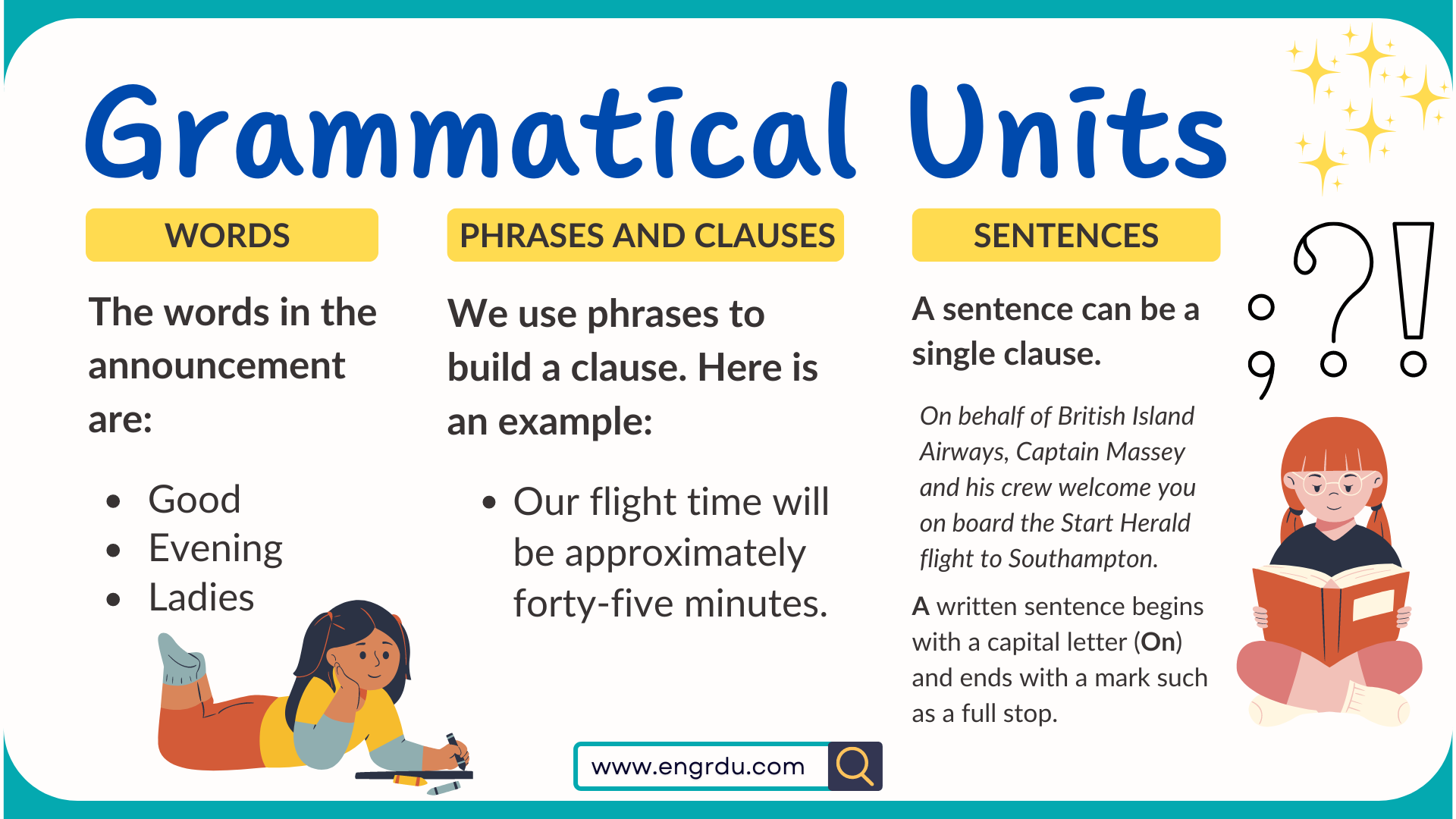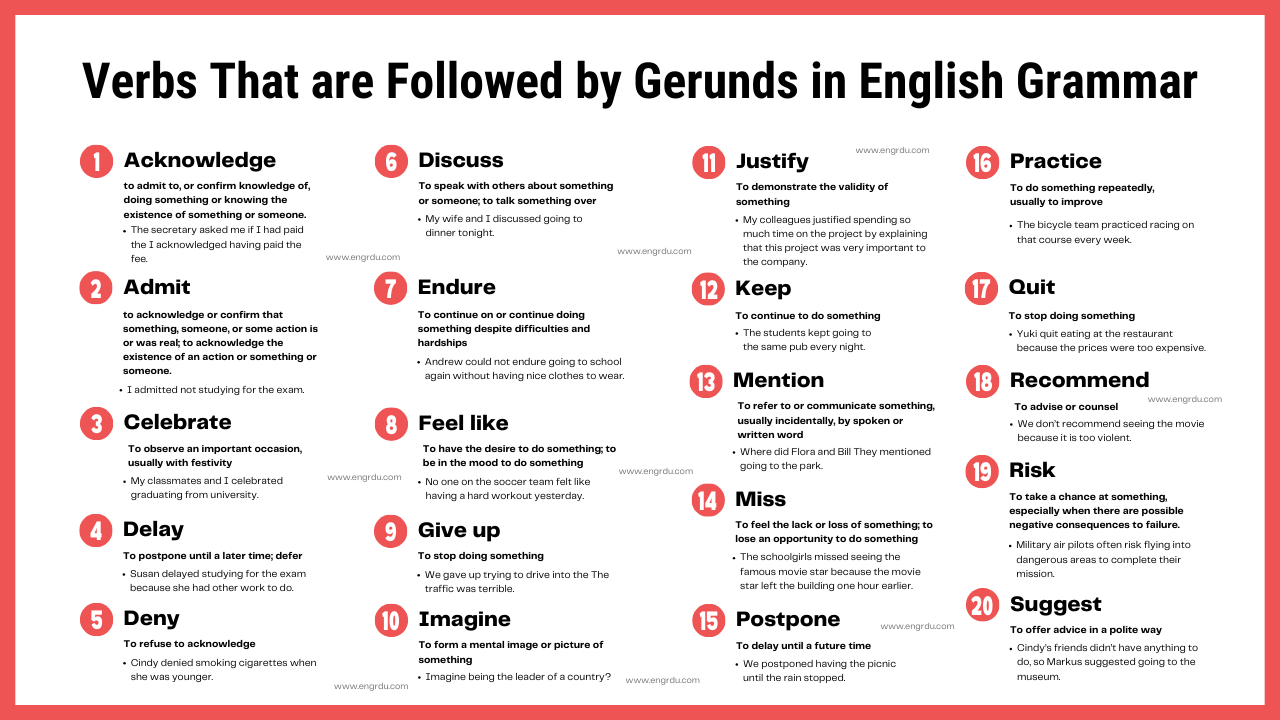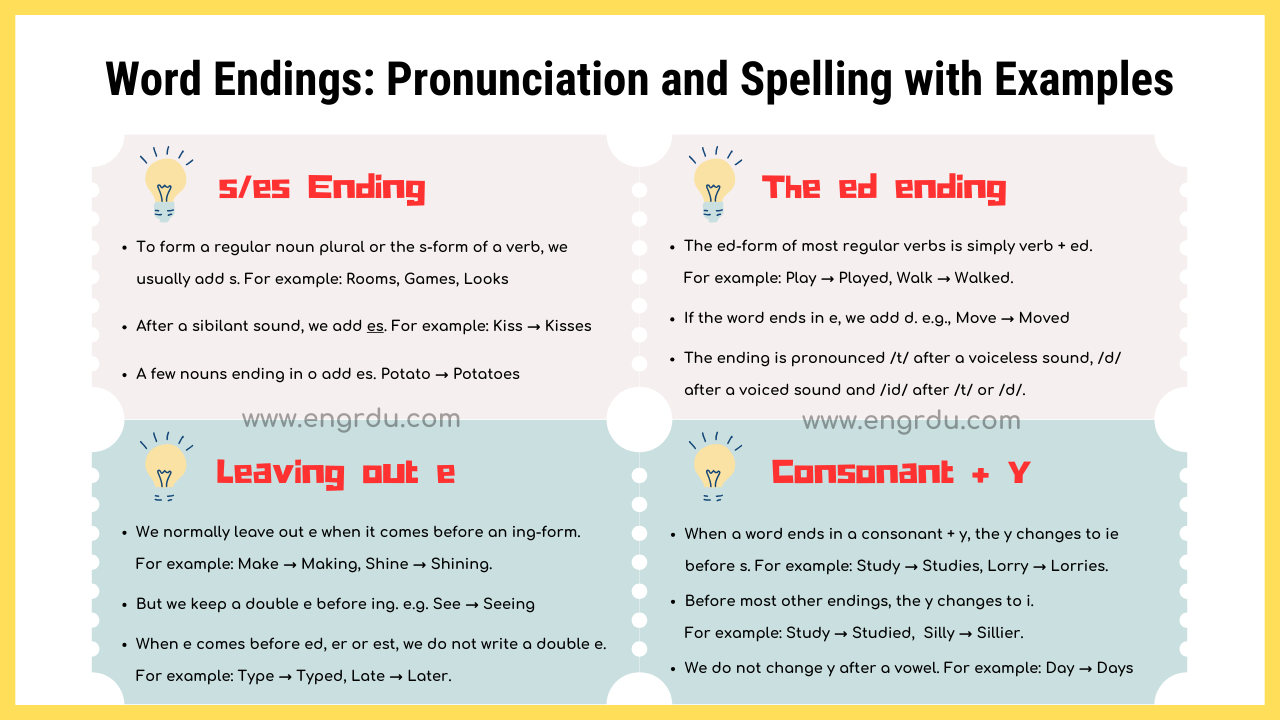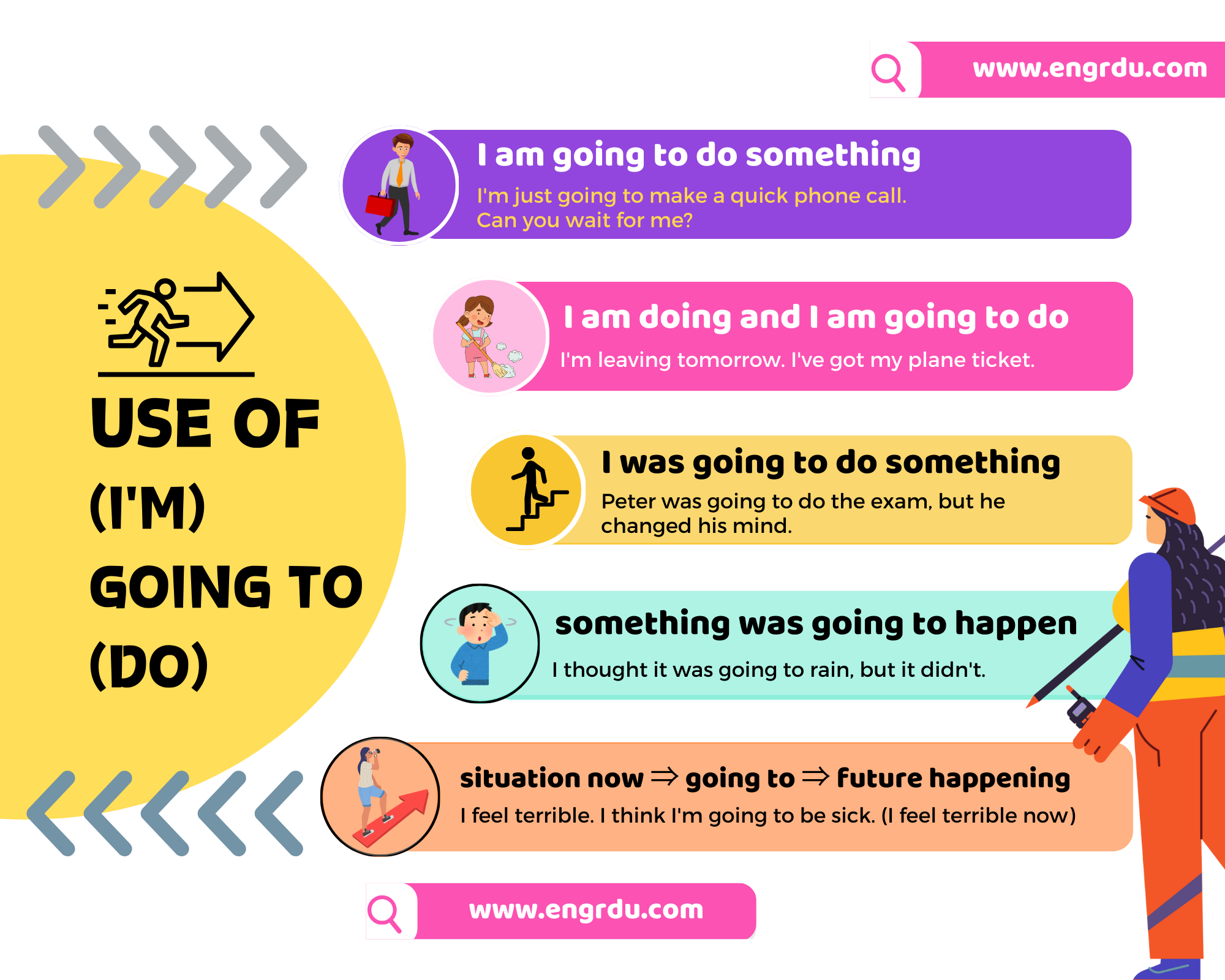Study the rules, usage, example sentences, and verbs that will be transitive and intransitive in English. In this article, I brought a very helpful and interesting lesson on transitive and intransitive verbs in English with their helpful examples and PDF. Learn the entire lesson and improve your knowledge about transitive and intransitive verbs.
Intransitive Verbs
An intransitive verb cannot take an object, although there can be a prepositional phrase after it.
Examples:
- The man was waiting at the side of the road.
- Something unfortunate happened.
- The man runs along the beach every morning.
Intransitive verbs usually express actions (people doing things) and events (things happening).
A verb can be intransitive in one meaning and transitive in another. For example, run is transitive when it means’manage.’
- He runs his own business.
Transitive Verbs
A transitive verb takes an object.
Examples included:
- The man stole a coat.
- Everyone enjoyed the conference.
- The driver saw the hitchhiker at the side of the road.
- The man had no money.
Transitive verbs can express not only actions (stole) but also feelings (enjoyed), perception (saw), and possession (had).
After some transitive verbs we can leave out the object when it would add little or nothing to the meaning.
- The man opposite was reading (a book).
- We’re going to eat (a meal).
- A woman was driving (the coach).
We can also leave out the object after these verbs:
ask/answer (a question), draw/paint (a picture), enter/leave (a room/building), pass/fail (a test/exam), play/win/lose (a game), practice (a skill), sing (a song), speak (a few words), and study (a subject).
The following verbs can also be without an object if the context is clear: begin, choose, decide, hear, help, know, notice, see, and start.
There must be an object after discuss and deny.
- The committee discussed the problem.
- He denied the accusation.
Many verbs can be either transitive or intransitive.
| Transitive | Intransitive |
| The driver stopped the coach. He opened the door. I broke a cup. Someone rang the bell. |
The coach stopped. The door opened. The cup broke. The bell rang. |
The two sentences can describe the same event. The transitive sentence has as its subject the agent, the person who made the event happen (the driver). The intransitive sentence describes the event but does not mention the agent.
Transitive and Intransitive Verbs Examples
Here are some common verbs that can be transitive or intransitive:
- alter
- develop
- increase
- shine
- tear
- begin
- divide
- join
- shut
- turn
- bend
- drive
- melt
- slide
- weaken
- boil
- dry
- mix
- smash
- unite
- break
- end
- move
- soften
- burn
- finish
- open
- sound
- change
- fly
- pour
- spread
- close
- freeze
- ring
- stand
- cook
- hang
- roll
- start
- combine
- harden
- sail
- stop
- continue
- hurt
- separate
- strengthen
- crash
- improve
- shake
- swing
Raise is transitive, and rise is intransitive. For example:
- The oil companies will raise their prices.
- The price of oil will rise.
Types of Transitive and Intransitive Verbs
Both transitive and intransitive verbs have further classifications based on how they function in sentences. Here’s a table summary of the types of transitive and intransitive verbs with examples:
| Verb Type | Requires Object(s)? | Example |
|---|---|---|
| Monotransitive Verb | Yes, one direct object | She reads books. |
| Ditransitive Verb | Yes, two objects (direct & indirect) | He sent her a letter. |
| Complex Transitive Verb | Yes, direct object + object complement | They named him captain. |
| Pure Intransitive Verb | No | She sings. |
| Ergative Verb | No (subject undergoes action) | The door opened. |
| Phrasal Intransitive Verb | No | She gave up easily. |
So, that was our today’s lesson where we learned and cleared up the confusion about transitive and intransitive verbs along with their types and example sentences in English. After reading the above discussion and explanation, make sure to practice. Without practice, you can’t improve your communication and conversation skills.
Now, I am going to share with you the charts of transitive and intransitive verbs. These charts are more helpful for you. Take a short look at these charts:
I know you are looking for a PDF book of this lesson. Because the PDF book will help you to revise this lesson when you leave our blog. Don’t worry, I respect your emotions. The PDF book is attached below. You can download it with one click.
Transitive and Intransitive PDF Book
Let’s learn more…

